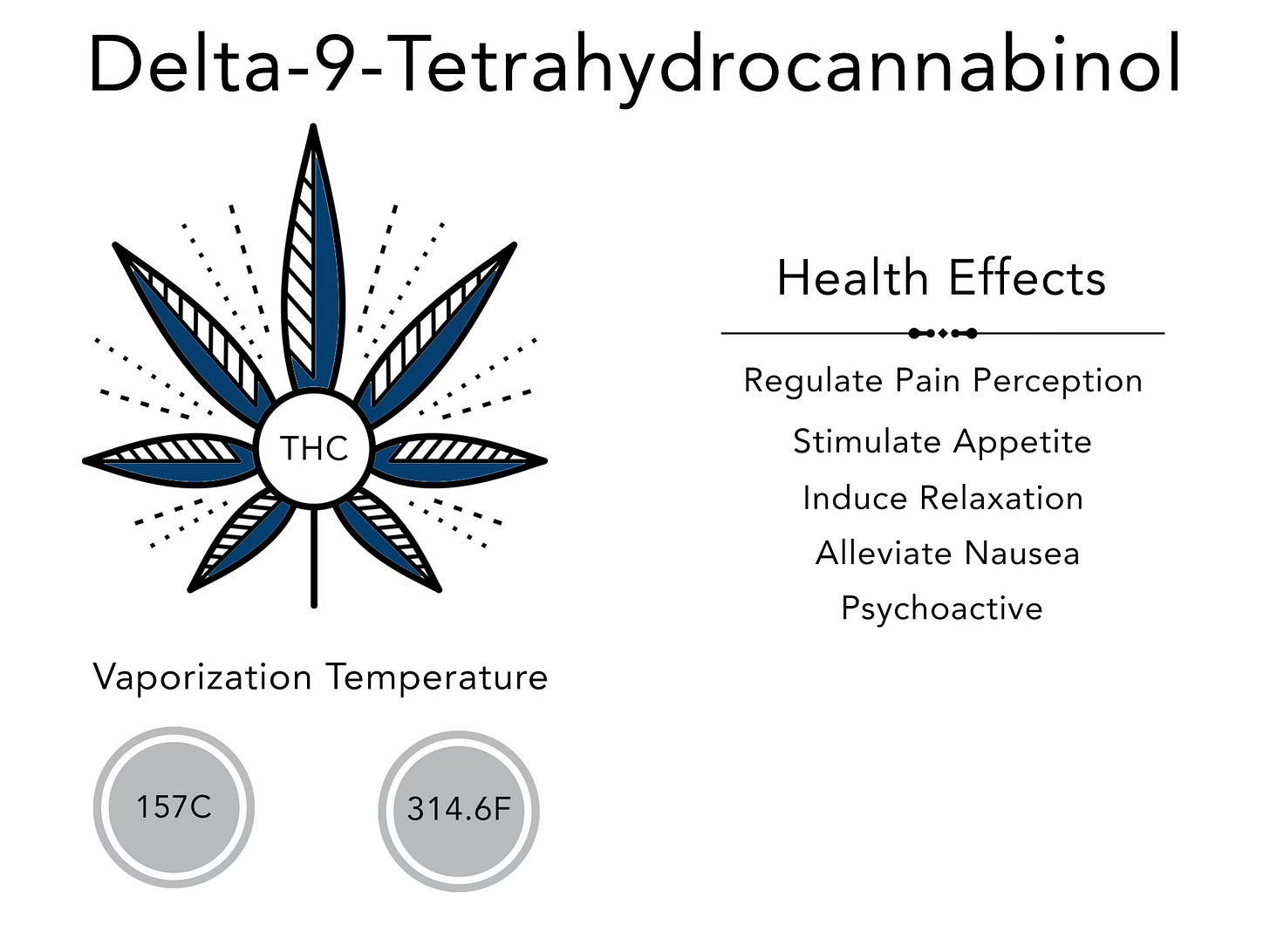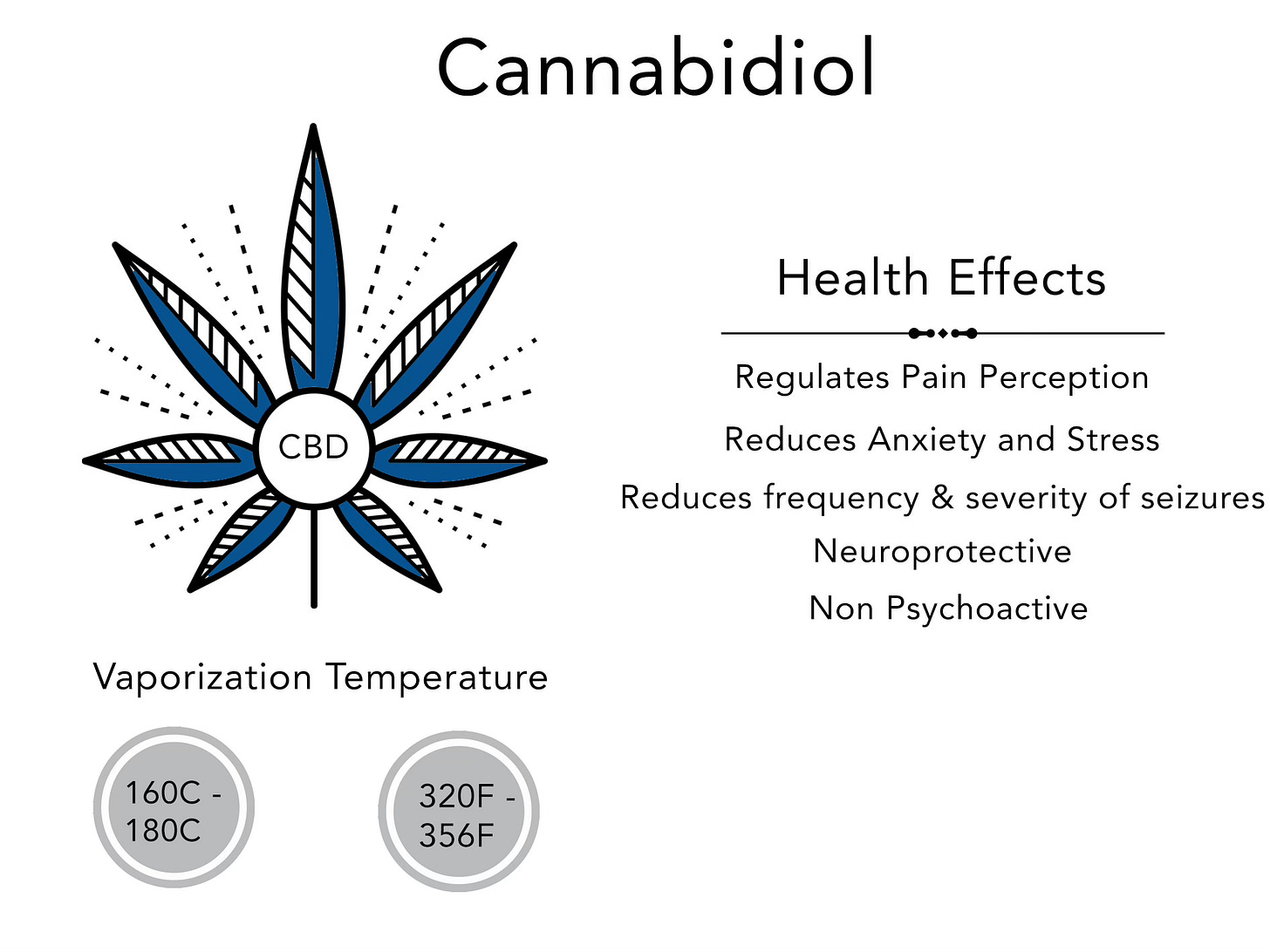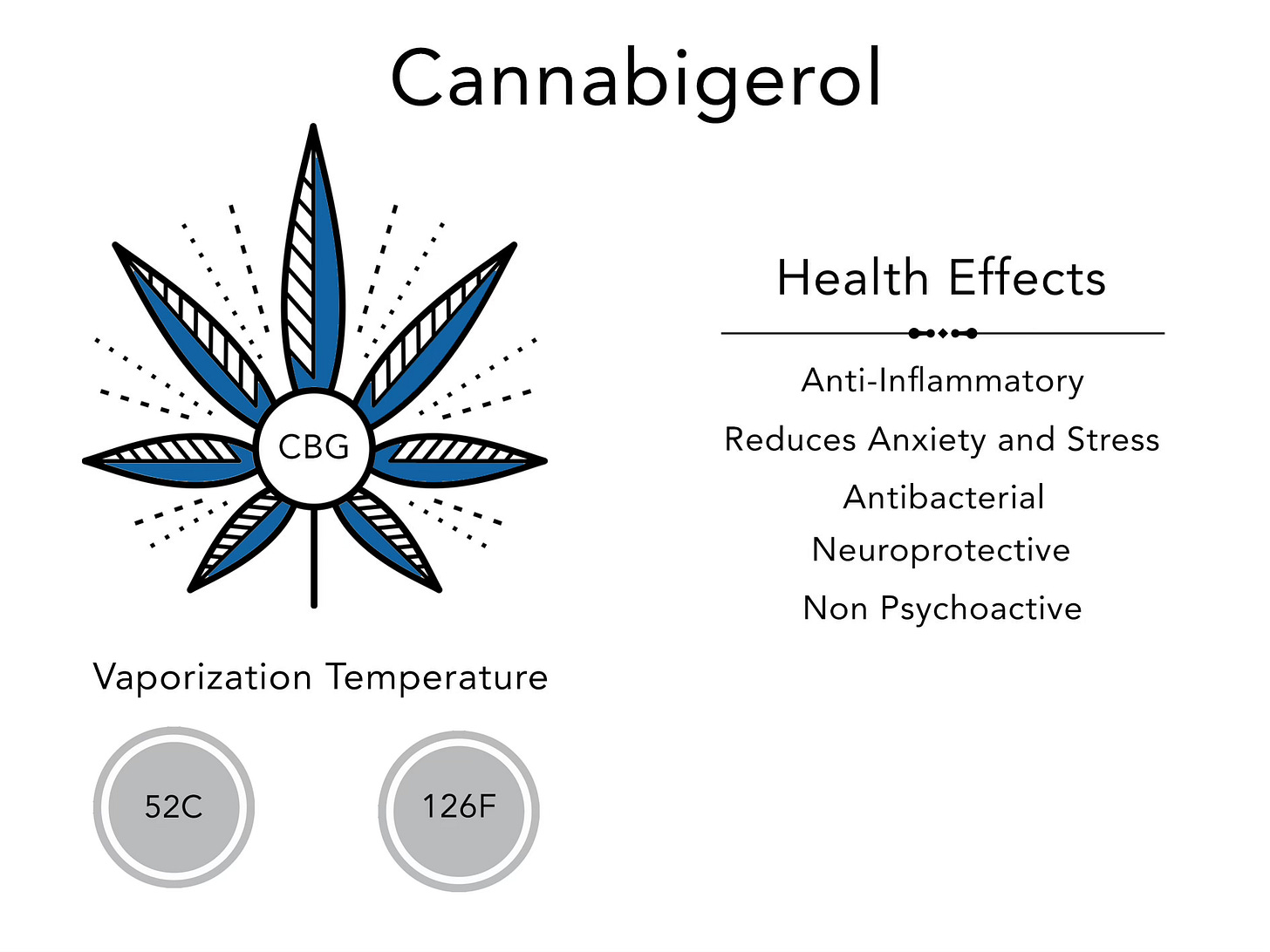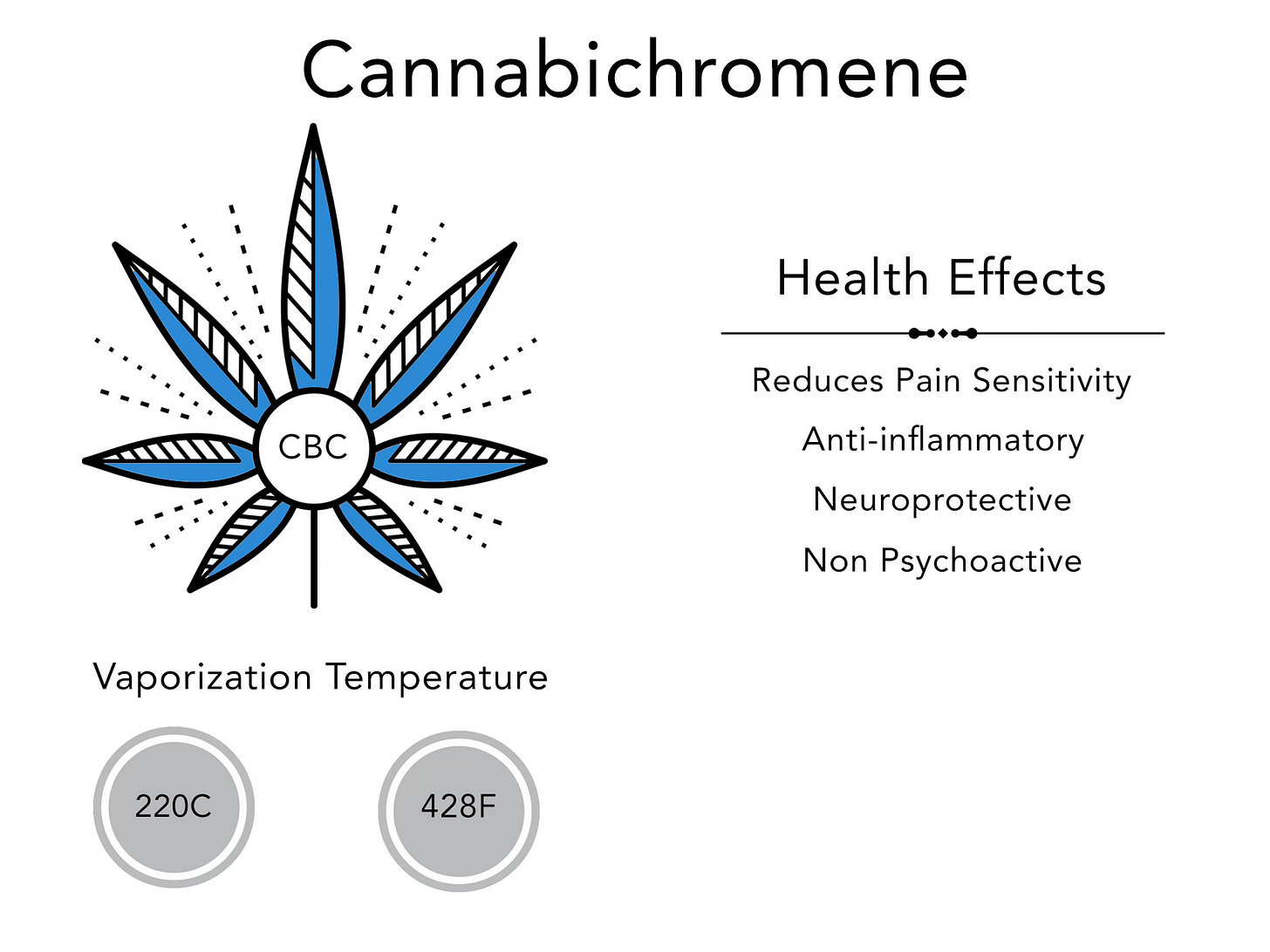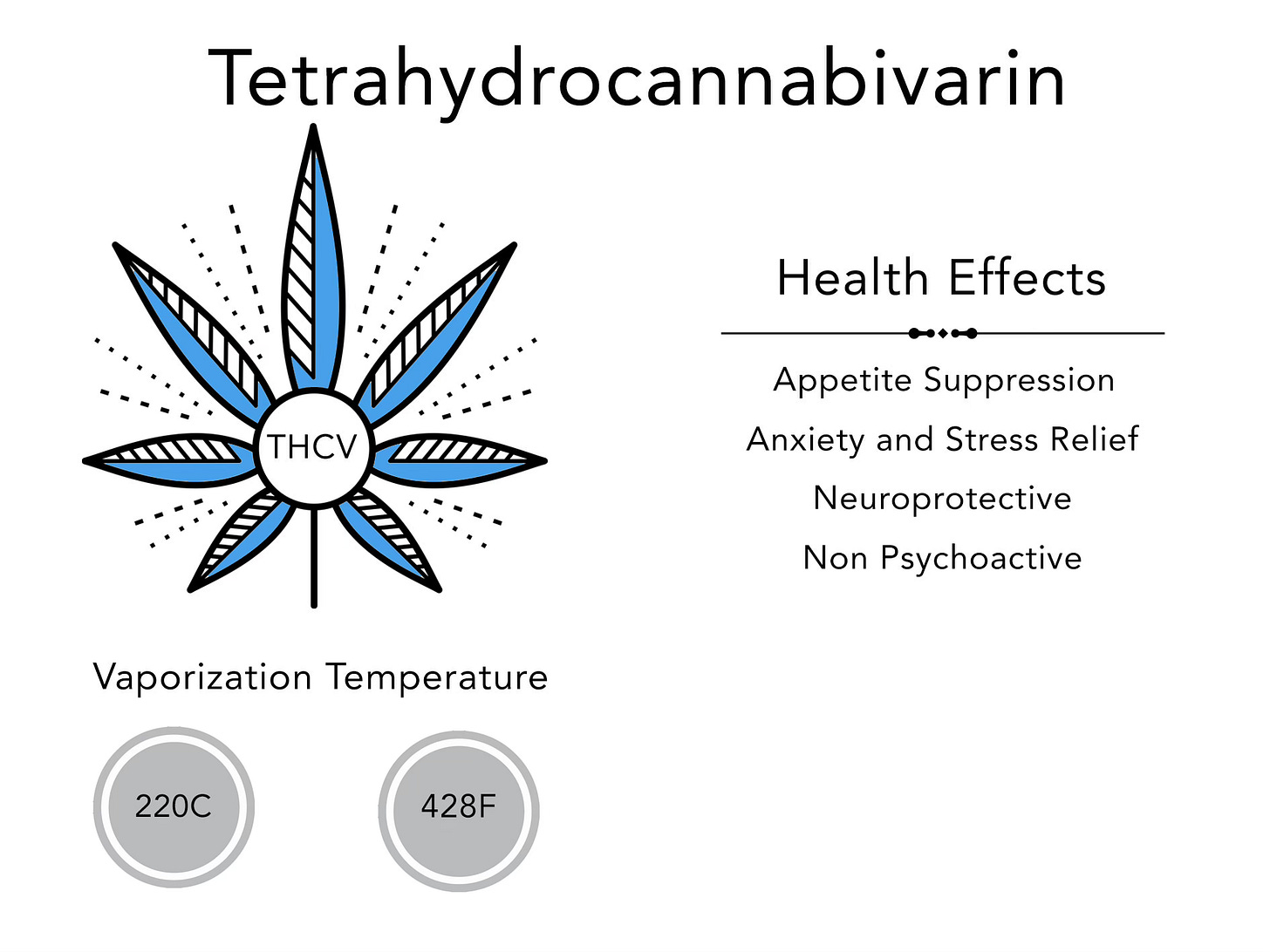Cannabinoid of the Month: Recap | AusCannaReviews
This post is a review post of all the Cannabinoids I’ve covered in 2024!
This doesn’t mean I’m finished with cannabinoids; it simply means that next month, we’ll dive into the Endocannabinoid System—the intricate network within our bodies that interacts with cannabinoids and terpenes to unlock their therapeutic potential. Then, as we wrap up the year, we’ll explore the Entourage Effect and explore how these compounds work in harmony to create a synergistic impact on our overall health.
Cannabinoids are a class of chemical compounds found primarily in cannabis plants. From THC and CBD, as well as lesser-known ones like CBG, CBC, and CBN each cannabinoid brings its own set of unique properties and potential benefits to the table.
THC engages with the body's Endocannabinoid System (ECS) by binding to two main types of receptors: CB1 and CB2. These receptors are abundant in the brain, as well as throughout the central and peripheral nervous systems. The brain identifies THC because its chemical structure closely resembles anandamide, a natural intercellular communication chemical found in various animal tissues, including humans. This similarity enables THC to bind to CB1 and CB2 receptors, mimicking anandamide's actions within the body's ECS and altering normal brain communication. While THC is often celebrated for its psychoactive effects, it's important to acknowledge THC's ability to regulate pain perception, induce relaxation, stimulate appetite, and alleviate nausea making it a valuable therapeutic agent for many individuals.
CBD interacts with the endocannabinoid system in the human body, which plays a crucial role in regulating pain sensation, by modulating the activity of neurotransmitters and receptors involved in pain signaling. CBD has demonstrated promising results in reducing anxiety and stress levels. CBD has emerged as a potential treatment for various neurological disorders, such as epilepsy for its ability to reduce the frequency and severity of seizures, particularly in individuals with treatment-resistant forms of the condition. In addition to its therapeutic effects, CBD is recognized for its neuroprotective properties, which may support brain health and cognitive function. It’s believed CBD has antioxidant and anti-inflammatory properties that could protect against neurodegenerative diseases like Alzheimer's and Parkinson's disease.
CBG is a precursor to other cannabinoids, including THC and CBD and is often referred to as the mother of all cannabinoids. Research into the therapeutic effects of CBG is still in its infancy, but preliminary studies suggest that it may have a range of potential health benefits. These include anti-inflammatory, neuroprotective, antibacterial, and mood-enhancing properties.
CBN is generated as a result of the degradation of THC when a cannabis plant is exposed to heat and oxygen. It is found in trace amounts in fresh cannabis however, its concentration increases as the plant ages or undergoes oxidation. CBN could be particularly useful in alleviating neuropathic pain conditions. CBN may extend sleep duration and enhance sleep quality, presenting a natural alternative to conventional sleep medications. CBN could be of promising therapeutic potential as an intervention for patients with glaucoma. While more research is needed CBN may help treat obesity.
CBC primarily interacts with the ECS via CB2 receptors, which are more abundant in peripheral organs and the immune system. CBC could potentially serve as an alternative to opioid-based painkillers, which carry a high risk of addiction and overdose. CBC is a promising candidate for managing inflammation without the adverse effects associated with long-term use of nonsteroidal anti-inflammatory drugs (NSAIDs) or corticosteroids. CBC has shown potential in promoting neurogenesis, the process of forming new neurons and protecting neural health, meaning it could potentially be used one day as a treatment for neurodegenerative diseases such as Alzheimer's and Parkinson's disease.
One of the most notable potential benefits of THCV is its ability to suppress appetite, which contrasts sharply with THC’s appetite-stimulating effects. THCV has been observed to have anxiolytic effects without significant psychoactivity. THCV has shown potential in improving cognitive function, particularly in enhancing focus and mental clarity. Research indicates that THCV may act as a neuroprotective agent, which can be beneficial in managing neurodegenerative diseases like Parkinson’s disease.
THCA is the acidic precursor to THC. One of the most well-studied aspects of THCA is its potential anti-inflammatory effects. THCA has neuroprotective properties which might help protect neurons from damage and degeneration. This could be beneficial in treating conditions like multiple sclerosis (MS), Huntington’s disease and possibly other neurodegenerative and neuroinflammatory diseases. THCA has also shown promise as an anti-nausea and appetite stimulant.
This substack aims to provide anecdotal information from my personal experiences in hopes it will lead to meaningful conversations between my readers and their healthcare professionals about medicinal cannabis.
I have no formal training in medicine or science. This article does not constitute medical advice.




